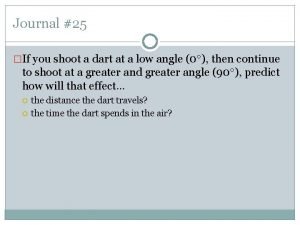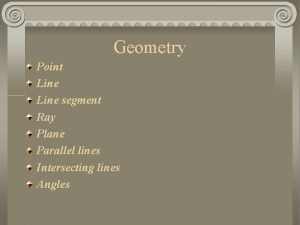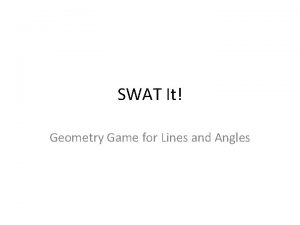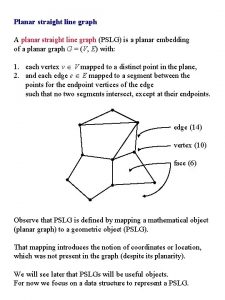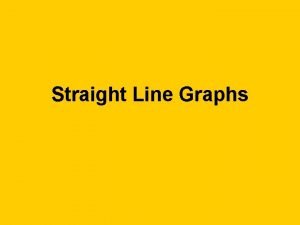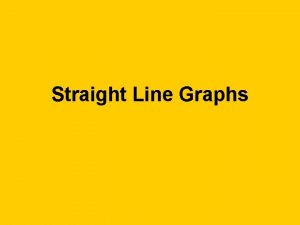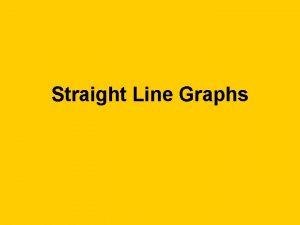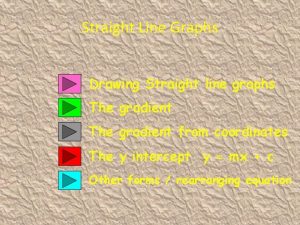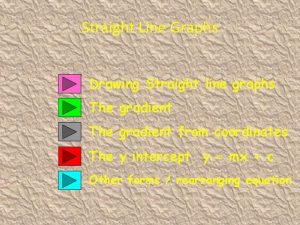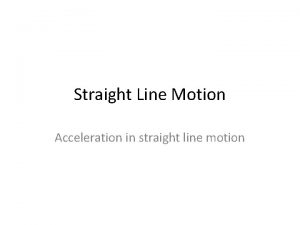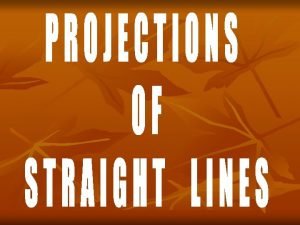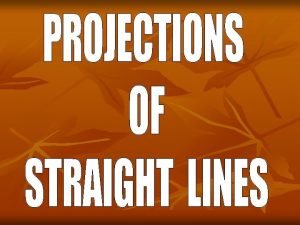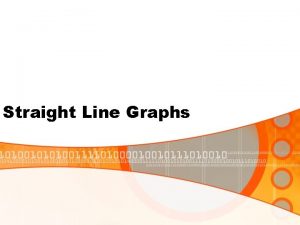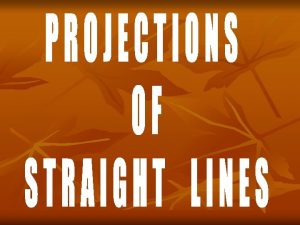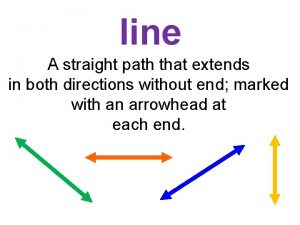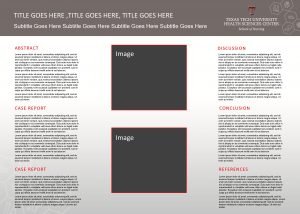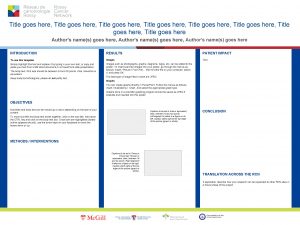Line a straight path that goes in two




















- Slides: 20


Line- a straight path that goes in two directions without ending. A AB B Read: “Line AB”

A ray has one end point and goes on forever in only one direction. C CD D Read: “Ray CD”

A line segment has two endpoints. E EF F Read: “Line Segment EF”

Identify the type of line: line, ray, or line segment.

Identify the type of line: line, ray, or line segment.

Identify the type of line: line, ray, or line segment.

Identify the type of line: line, ray, or line segment.

Identify the type of line: line, ray, or line segment.

Identify the type of line: line, ray, or line segment.

Parallel Lines- lines that never cross or become further apart from each other. J K L M JK ║ LM Read: “Line JK is parallel to line LM”

Intersecting Lines- lines that cross each other. O Q R P OP intersects QR

Perpendicular Lines- lines that cross or meet each other to form square corners (90º angle). U T S ST ┴ UV 90º/Right Angle V Read: “Line ST is perpendicular to line UV”

Identify if the lines are parallel, perpendicular, or intersecting (not at a perpendicular angle).

Identify if the lines are parallel, perpendicular, or intersecting (not at a perpendicular angle).

Identify if the lines are parallel, perpendicular, or intersecting (not at a perpendicular angle).

Identify if the lines are parallel, perpendicular, or intersecting (not at a perpendicular angle).

Identify if the lines are parallel, perpendicular, or intersecting (not at a perpendicular angle).

Identify if the lines are parallel, perpendicular, or intersecting (not at a perpendicular angle).

Identify if the lines are parallel, perpendicular, or intersecting (not at a perpendicular angle).
 A straight path that goes on without end in two directions
A straight path that goes on without end in two directions Single donut hose roll
Single donut hose roll Fiora vvv
Fiora vvv Phân độ lown
Phân độ lown Premature atrial contraction
Premature atrial contraction Thơ thất ngôn tứ tuyệt đường luật
Thơ thất ngôn tứ tuyệt đường luật Thơ thất ngôn tứ tuyệt đường luật
Thơ thất ngôn tứ tuyệt đường luật Walmart thất bại ở nhật
Walmart thất bại ở nhật Tìm vết của mặt phẳng
Tìm vết của mặt phẳng Hãy nói thật ít để làm được nhiều
Hãy nói thật ít để làm được nhiều Tôn thất thuyết là ai
Tôn thất thuyết là ai Gây tê cơ vuông thắt lưng
Gây tê cơ vuông thắt lưng Sau thất bại ở hồ điển triệt
Sau thất bại ở hồ điển triệt Refers to the path the projectiles make.
Refers to the path the projectiles make. Collection of points along a straight path
Collection of points along a straight path Endpoint of an angle
Endpoint of an angle Qimata
Qimata What is representative fraction
What is representative fraction The commandments of animal farm
The commandments of animal farm Light travels in a straight line
Light travels in a straight line Straight line ppc
Straight line ppc













